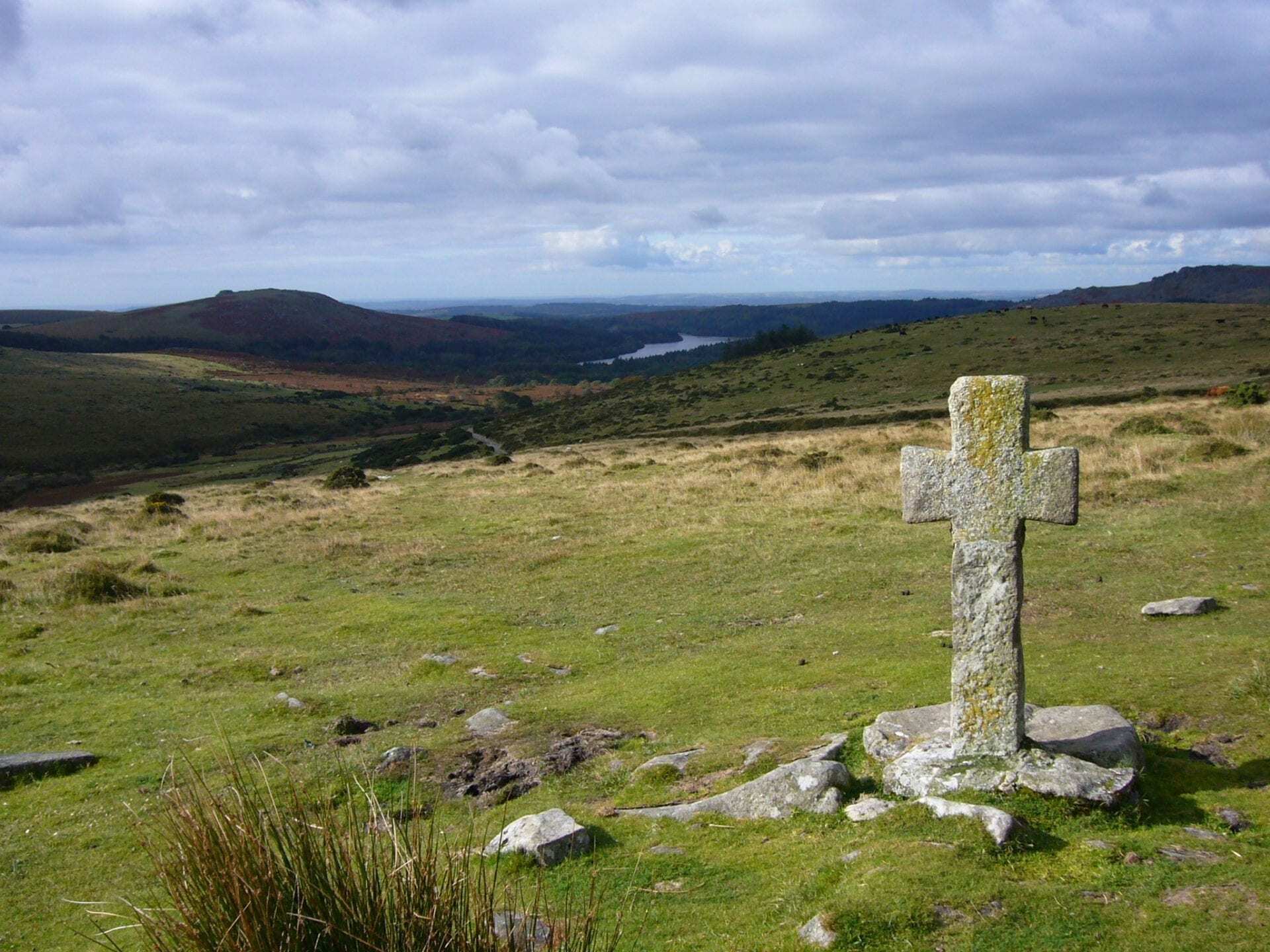A granite cross discovered by walkers in Dartmoor returned to the location of discovery.
The previously unrecorded granite cross was discovered by a group of walkers on the King Way near Bridestowe on northern Dartmoor. Ron’s Ramblers – Ron Johns, Mike Smith, Bill Furneaux, Ed Squires and Peter Hodges – a group of former dockyard workers from Plymouth were enjoying one of their regular Dartmoor walks when they spotted the cross set into a corn ditch wall.
Corn ditches originate from the time when Dartmoor was a royal hunting area and there was a need to keep the King’s deer out of the cultivated land. A stone revetted wall and external ditch faced onto the open moor which deterred deer and other animals from jumping over, whilst the sloping grassy bank on the inner face allowed those animals which had entered to exit again without difficulty.
The wall, known as the King Wall, lies close to Great Nodden, along an ancient route known as the King Way.
The cross is cut in relief on just one side. This is a method of carving where the design stands out from the surface in a raised fashion. The lower part of the cross shaft has broken off, but when complete it was most probably over 2 metres high. It is likely that this was once a wayside cross marking an ancient route.
The King Way is the Tavistock to Okehampton section of the old coaching route between London to Plymouth along which the King’s Mail was taken. The King is believed to be Charles I and much of the route can still be found. However it is very probable that the route was in existence long before this period, and could be associated with Tavistock Abbey and Lydford; both of which have Saxon origins.
Andrew Langdon, an expert on Cornish crosses, has looked at the cross and feels that it is probably post Conquest in date. The design of the cross is described as being Greek rather than Latin, which is a style much more commonly found in Cornwall than on Dartmoor.
The cross was temporarily removed to Dartmoor National Park Authority’s works yard whilst the new base was made for it by the Authority’s stone mason Andy Cribbett. During the summer the cross was on display at the High Moorland Visitor Centre in Princetown where it was unveiled with its new base by His Royal Highness The Duke of Cornwall, as part of the celebrations of Dartmoor National Park’s 60th anniversary.
The cross can be seen on the King Way at Ordnance Survey grid reference SX 5351 8740.
Header Image Credit : Herby





